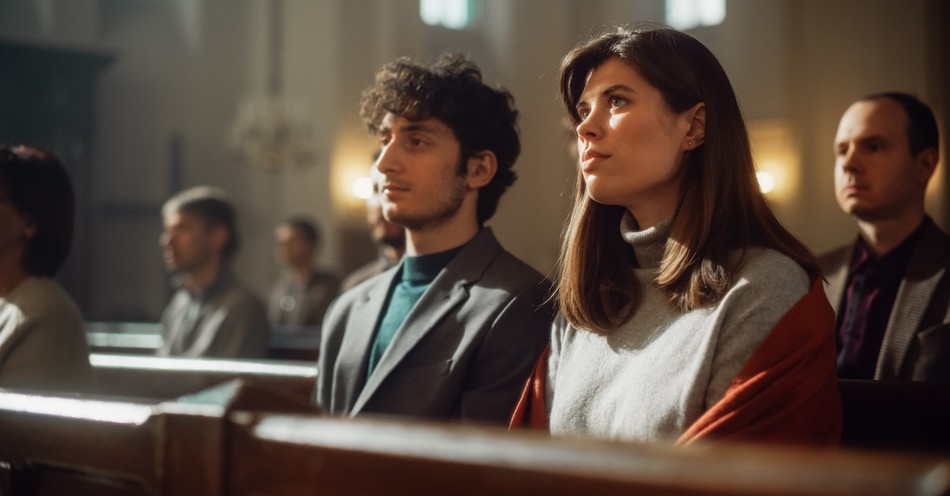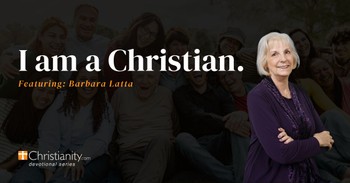As a kid, my dad would show up for church twice a year—Christmas and Easter. The rest of the family went several times every week. Today, we would call my dad a Chreaster. His mother loved Jesus and raised him in church, so he honored her in some ways by attending on those days.
Fortunately, time passed, and God revealed himself to my dad through situations and the Spirit. It took him a while to process his own past and what he actually believed. He’s no longer a Chreaster.
When we use the word Chreaster, these can be people we love. Often, we desire to see them get more involved and enjoy a deeper relationship with Christ and others. What can we understand about Chreasters? And how can we draw them into more local church participation?
What are Chreasters?
Some Christian communities use the term “Chreaster” to describe people who only attend church services on Christmas and Easter. “Chreaster” blends “Christmas” and “Easter.” The term might sound lighthearted, but it also carries some concern with churches. The Bible and most faith fellowships find regular church participation central to Christian growth.
Many churches notice a significant increase in attendance on Christmas and Easter, often with people they don’t see the rest of the year. “Chreasters” might come with family members who regularly attend. Others might be whole families who only come those two days. While church leaders always encourage more consistent involvement, they also recognize “Chreasters” may be in different places in their faith journey.
Holiday-only attendance isn’t new. People have gathered for Christmas and Easter for centuries, even if they weren’t practicing their faith the rest of the year. Christmas and Easter have great importance in the Christian calendar. Christmas celebrates the miraculous birth of Jesus, God coming into the world to dwell with humanity (Matthew 1:23). Through Christmas, we celebrate the incarnation, where God chooses to initiate the Gospel by coming to be with us. Born as a human, he could live and speak our language to teach and be a holy example. At the end of his ministry, he submitted himself to death on a cross and then rose again. Easter celebrates this resurrection, when Jesus won the victory over sin and death (1 Corinthians 15:17). Through his resurrection, all believers will one day experience resurrection, as well, the end result of the born-again spiritual experience.
Why are Some People Chreasters?
“Chreasters” have various reasons for only attending church on Christmas and Easter. For many, family events revolve around these two main holidays, with relatives coming into town and big family gatherings. Attending church might be part of the holiday customs. Even if they don’t regularly attend church, they might feel connected with family during these traditions. Attending during Christmas and Easter can feel comforting with relatives and parents around.
For some, church on Christmas and Easter brings back great childhood memories. They remember the songs, the decorations, and the activities with fondness. This nostalgia alone might pull them back to church once or twice a year, reconnecting them to peaceful or reverent moments. Proverbs 22:6 tells us, “Train up a child in the way he should go, and when he is old, he will not depart from it.” Despite straying from faith or attending church, early times of faith may draw them back, especially on major holidays with so much symbolism and meaning.
Many Chreasters come on these holidays out of a sense of duty or respect for family members who invite them. Certain families value faith, and they want everyone together for these times. Attending church on Christmas and Easter honors the faith of parents, grandparents, or other close family members. Chreasters might show up to express their respect or keep the peace.
Some Chreasters might feel disconnected from their faith but still believe in Jesus or God. They see Christmas and Easter as the most important days to recognize these beliefs, even if they don’t attend other times. These holidays reconnect them with their faith in Christ’s impact on their life, even if they might feel comfortable with regular church or “religion.”
For others, they may feel life or work demands keep them from coming to church regularly. However, with special time off for these holidays, they make a special effort to come to Christmas and Easter services. Work, family, or other responsibilities can overwhelm a schedule and make it hard to get to church.
Or it could be a combination of two or more of these. Chreasters all have their own unique reasons for why they attend. Christmas and Easter provide opportunities to reconnect and experience deeper meaning, even if for only one or two days a year.
What are the Positives and Negatives of Being a Chreaster?
As one positive, being a Chreaster shows some understanding and respect for Christianity and the central redemptive moments of Christmas and Easter. By attending on these days, Chreasters connect with the core truths of Christianity, honoring Jesus’ birth, death, and resurrection despite not attending regularly. Christmas and Easter allow people to reconnect with faith and spirituality, and it could lead to deeper exploration. A visit on either day could be the start of a new faith journey with others and Jesus.
These two holidays also become touchpoints for relationship with other Christians, their families, or the pastors. If church happens to be an important value for a family member, their local fellowship serves as another family for them. Simply meeting people so involved in a loved one’s life helps a Chreaster to better know their loved one. And the family member desires their church to know the Chreaster they love, too.
However, being a Chreaster has drawbacks, too, especially when we view it through biblical teachings on fellowship with other believers. The Bible commands regularly gathering with other Christians for mutual encouragement and growing in faith. Hebrews 10:24-25 warns us, “And let us consider how we may spur one another on toward love and good deeds, not giving up meeting together, as some are in the habit of doing, but encouraging one antoher—and all the more as you see the Day approaching.” The author of Hebrews wrote that around 2,000 years ago. We’re definitely closer to the final Day of the Lord than we were then. The New Testament teaches the church to live like a family since we have the same Father in heaven. Attending twice a year makes it difficult to build real relationships with fellow disciples of Jesus and grow spiritually.
The Bible calls us to encourage each other daily. Only connecting once or twice a year risks losing faith altogether. Regular worship prevents unbelief. “See to it, brothers and sisters, that none of you has a sinful, unbelieving heart that turns away from the living God. But encourage one another daily, as long as it is called ‘Today,’ so that none of you may be hardened by sin’s deceitfulness.” Unbelief differs from disbelief. Disbelief says, “God doesn’t exist.” Unbelief says, “God exists but we don’t need him and he can’t help us.”
In our modern culture, people might try to substitute online worship for doing so in person. While individuals can get great sermons and worship online, it’s not the same as being physically present. In person, Christians have to forgive, show grace and love, and have an opportunity to share their gift. Online resources can be amazing, but we should never believe that they can be a substitute for in-person relationships.
How Can Local Churches Engage Chreasters for Deeper Faith Community?
Engaging Chreasters presents a challenge and an opportunity.
First, we should always approach Chreasters with joy and acceptance, not judgment or condemnation. Their presence during these holidays reveals some openness to faith, and we should celebrate this, not critique it. Jesus welcomed all who came to him, regardless of their history or frequency. As his disciples, we must also show the same love and grace. Again, we don’t know where they are on their faith journey. Criticism and judgment creates barriers, which is the last thing we want, but a warm welcome helps build bridges where all people feel valued.
Next, we should show Chreasters that Christian life and meaningful friendships don’t depend on church attendance but on genuine connection and encouragement. Building these relationships outside of Sunday services reveals how we value people for who they are and not where they show up or how often. Jesus spent time with people wherever they were, teaching us the heart of Christian fellowship lies in living out our love, kindness, and grace. Inviting Chreasters to informal gatherings and small groups or simply developing a friendship shows real, authentic Christian life.
Churches can use holiday services to explore faith in a simple, consistent way. For example, pastors can extend an easy invite for guests to join small groups, Bible studies, or fellowship events. These should require minimal commitment, perhaps only a week or two, and it helps if these short classes or events address a felt need, something an irregular church attender may be looking for. Many who attend on holidays may be checking the church out or seeking community but don’t know how. By being specific with next steps, churches make it easier for people to feel they have a place in the church.
Offering follow-up resources is an amazing approach. Churches can collect information and send follow-up messages to holiday visitors, thanking them for attending and providing links to other resources like podcasts or small group information. These follow-ups allow Chreasters to get involved at their own pace.
Finally, churches shouldn’t be shy about sharing the importance of consistent fellowship. Pastors can highlight the blessings and support found in regular church attendance, using statistics about marriage and family improvements many people experience. Also, connect with passages like Hebrews 10:24-25. We must teach that Christian faith can only thrive in community, and this may help Chreasters see that their faith can grow with the support of others.
Engaging Chreasters requires patience, intentional effort, and understanding. We should listen and be ready to show God’s love in any way we can to all people, no matter the situation. For those seeking more, God’s love invites them into a supportive, Christ-centered community.
Peace.
Photo credit: ©GettyImages/gorodenkoff




